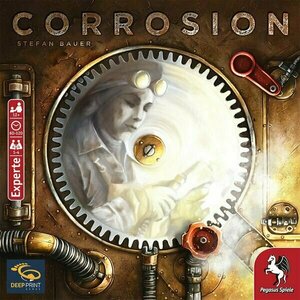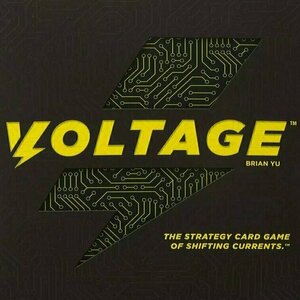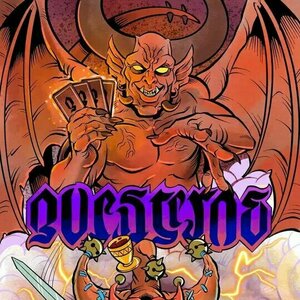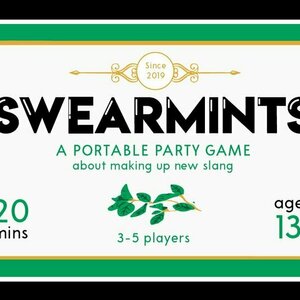
Swearmints
Tabletop Game
Overview Swearmints is a quick party game about making up new slang and defining it for your...
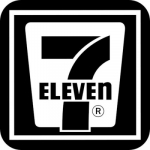
7-Eleven TH
Lifestyle and Entertainment
App
- Collect stamp in mobile app (M-Stamp) to use for buying product at 7-Eleven stores, redeem...

Raptor
Tabletop Game
Mamma Raptor has escaped from her run and laid her eggs in the park. A team of scientists must...
Boardgames 2BrunosGames DinoGames 2015Games 2playergames
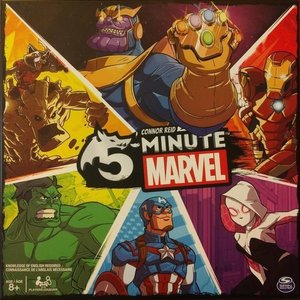
5-Minute Marvel
Tabletop Game
The Marvel version of the chaotically fast-paced cooperative card game 5-Minute Dungeon that lets a...
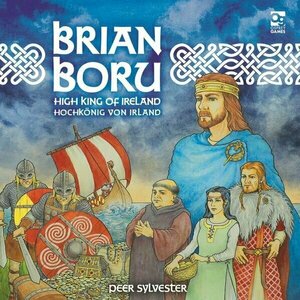
Brian Boru: High King of Ireland
Tabletop Game
In Brian Boru: High King of Ireland, you strive to unite Ireland under your domain, securing control...
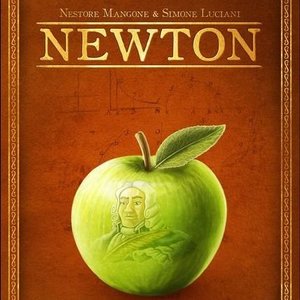
Newton
Tabletop Game
Around the middle of the 17th century with the advent of the scientific method, a period of great...
Boardgames 2018Games ScienceGames BrainGames ComplexGames
Purple Phoenix Games (2266 KP) rated MechaTop in Tabletop Games
Jul 2, 2020
Disclaimer: We were provided with a PnP version of this game for the purposes of this preview. Please excuse my lack of a color printer, and rest assured that the cards are colorful and eye-catching. The rulebook we have is not the finalized version, but rather an up-to-date draft detailing the overall rules and gameplay. Some changes will probably take place during the Kickstarter campaign, so the finalized game system might have some differences to this preview. For more details, check out the publisher’s website! -L
MechaTop is a tabletop wargame system in which players pilot large Mecha suits and battle their opponents. To begin a game, you must first decide which game mode you want to play. After selecting the game mode, players create their Mecha teams for battle. Each game mode has an associated cost score limit – the highest maximum cost you can spend on your team. For example, a Mecha suit might cost 300, and the cost score limit for the chosen mode is 600, leaving you with 300 to spend on upgrade cards for your suit. Once all players have chosen and upgraded their Mecha suits, those corresponding cards are placing in their play area. Everyone then selects a Pilot card to be assigned to their Mecha suit, and receives a set of Button tokens and a secret Twist card (kept secret until played at any time during the game). Decide which weapons to equip on your suit for the start of the game, roll a d6, and take turns placing your Mecha in the playing field in ascending numerical order of the die rolls. You are officially ready to start the game now!
Each round begins with the Instinct Phase, where players decide which 2 Button tokens they want to play this round. The Button actions are: Attack, Movement/Rotation, Change Weapon/Reload, and possibly Telekinesis. After the Buttons have been selected, they are placed face-down on the playing field next to their corresponding Mecha suit. Next is the Initiative Phase, in which all players roll a d6 and the player who rolled the highest gets to act first in the round. On your turn, you may choose to activate 1 Button token, activate both Button tokens, or declare No Action and pass your turn. Choosing to activate only 1 Button allows you to perform a simple action, but activating both at the same time in certain combinations allows you to perform a more powerful type of the corresponding action. Choosing to do No Action allows you to keep both Button tokens facedown. The benefit to leaving either 1 or both Button tokens facedown is that you can then use them as reactions during an opponent’s turn. Let’s say an opponent tries to Attack you – if you have your Movement Button still at your disposal, you can use it to attempt to dodge the hit and negate that damage. If you don’t use a Button in that situation, or don’t have one left face-down, all the damage goes straight through on your suit, thus bringing you closer to losing the game. Be warned – some actions are automatic, but some are resolved by dice rolls, so you better hope luck is on your side! After all players have had a turn in Initiative Order, a new round begins with another Instinct Phase. Play continues in this manner until the win condition of the selected game mode has been met, and the winner is deemed victorious!
First and foremost, I think one of the coolest things about the MechaTop system is that it can be played using ANY mecha models, action figures, or standees that you choose. In my childhood, Transformers made up a decent amount of our household, so it’s neat that I am able to bring those back out again after all these years. The nostalgia is great in that sense, and it makes the game more enjoyable. Also along those lines, the game will come with blank Mecha and Pilot cards for you to create your own – the rulebook has a section dedicated to stat card creation. It’s a neat element that lets you add a personal twist to your game, and lets you sit in the pilot’s seat (see what I did there?) to make the game truly your own! In the team creation step, players also have the opportunity to buy Upgrades for their suits, and that gives you additional control over your game. You can create so many different combinations of Upgrades that keep each game unique and entertaining.
The overall game flow is pretty nice. The rounds are logical, and the Button tokens add a unique element of strategy that takes this game to the next level for me. Do you forego doing a special action this turn and save a Button token in case an opponent tries to attack you? Or are you willing to risk damage to your Mecha suit in order to execute the exact plan that you want? The Button tokens take MechaTop beyond a simple attack-and-defend wargame and incorporates strategy to help balance out the randomness of Initiative rolls. The Twist cards are a nice touch as well, because if played at the right time, they could literally turn the battle around for you! No matter how good your strategy is, however, all offensive/defensive actions are dictated by dice rolls. So there’s a bit of a luck element embedded in this game as well. You have to be able to adapt your strategy on the fly depending on how your die results are turning out!
There is a bit of a learning curve to this game that can make it seem daunting at first. Different actions require a different number of dice to roll, and knowing what results counts as a success or failure is not always easy to remember. Incorporating a Player Reference Sheet would eliminate some of the confusion, but it does get easier to remember the more you play the game. Probably the biggest drawback of the system for me is that there is no set game board or movement system. The rulebook details movement speeds and weapon ranges based on different scales of models you might use, but that honestly just went right over my head. Providing a set of bases for models, as well as a hex-grid board would take out that guess-work for players and make it easier to visualize movement and range. And that would help keep the game flowing smoothly because players would not have to spend time measuring distances across the play area.
Let’s talk components. As I mentioned earlier, we only have a PnP copy of MechaTop, so admittedly our components are not the best. That being said, the finalized game should be coming with nice colorful cards, sturdy cardboard tokens, and good quality dice. Don’t let my drab version keep you from checking out the game on BGG or its own website!
All in all, MechaTop is a wargame system that I can see myself playing again. The gameplay itself is straight-forward and simple to grasp, but the strategic elements incorporated with Button tokens, Twist cards, and Upgrades ensure that you will never play the same game twice. If you’re looking to get into wargame systems, or are just looking for a unique wargame setting, definitely check out the MechaTop Kickstarter when it goes live later this month!
Purple Phoenix Games (2266 KP) rated Questeros in Tabletop Games
Jan 21, 2021
Ero is the goblin court jester from the open who has been “chosen” to quest about the land to rid it of the ne’er-do-wells of the realm. In this solo adventure mode of Questeros the player will be donning the visage and character of Ero as they travel about developing their skills and having encounters with powerful beings. It is up to the player to guide Ero through the kingdom and rid it of the foul that is plaguing it.
DISCLAIMER: We were provided a prototype copy of this game for the purposes of this review. These are preview copy components, and I do not know for sure if the final components will be any different from these shown. Also, it is not my intention to detail every rule in the game, as there are just too many. You are invited to download the rulebook, back the game through the Kickstarter campaign, or through any retailers stocking it after fulfillment. -T
To setup the solo game, fondly and ingeniously-named “Ero’s Quest,” follow the rulebook to divide the tarot cards into their specific stacks and splays so that it roughly imitates the photo below. Draw a hand of five cards from the deck and the game may begin.
On a turn the player has a choice of seven actions that may be performed in any order. Each action may only be performed once per turn and when the turn is over the final action is Rest. To use the Develop action the player will place a card from their hand onto the Blades, Staves, or Orbs stacks in next-numerical order. This increases Ero’s attack and spending power. To Puchase cards Ero will spend Orb cards to look at the spent Orb value worth of cards from the draw deck, add one to their hand, and place the others at the bottom of the draw deck. At times Ero will need to Forget cards from hand in order to make room for more cards to enter it via the Learn action. Forgetting simply discards cards from hand while learning draws cards into hand from the draw deck. Recover is used to stand any kneeling/turned/rotated cards into an unused state by destroying cards of higher value from hand. As stated previously, to Rest is to end the turn by discarding the top card of the draw deck to setup the next turn.
I purposely left out the final action choice, Encounter, for a specific reason. Ero’s Quest is won when the entire deck of 21 Encounter cards is defeated. Each of these cards depicts a person or persons that Ero meets in his travels. Some require Ero to give them cards in order to pass. Some require Ero to succeed in battle against them in order to progress. In either case, Ero will need to get through the entire deck before his draw deck runs out in order to win the game.
Battle in Ero’s Quest is turn-based, where the Encounter persona attacks first, thus handing Ero wounds immediately. Wounds are suffered by spending Cups cards in value of the wound taken. For example, the Assassin is a value of 12, so they immediately wound Ero for 12 damage at the start of the encounter. Ero will spend a value of 12 Cups cards to simulate damage taken. Ero may then attack with a combination of available Blades, Staves, and any Ally cards obtained – one of each per attack turn. If the Encounter is defeated, Ero lives on. If the Encounter is not yet defeated, the battle continues with the Encounter card dealing damage and Ero responding with damage until one is defeated.
As mentioned earlier, the Encounter deck contains 21 cards with six of these being combat encounters. Ero has a ton of work to do and when each turn requires a card to be discarded before a new round may begin, they also have an in-game clock ticking and ticking each turn. However, if Ero is able to Develop their skills and overcome all the Encounters, the game is won and Ero becomes a Hero.
Components. Again, this is a prototype copy of the game, and many items are not fully completed in this version. That said, what we were provided is a large stack of tarot-sized cards, a first player Ero token (for multiplayer games), and a large pad of scoring sheets (also for multiplayer use). The cards are great quality and feature some really excellent artwork (on the cards that have the completed artwork on them). I do like the art style employed here, as I am a fan of fantasy themes, and I know that the game will probably ship with similar iconography, but may also be color-coded for ease of reference. All in all I believe Questeros is headed in the right direction for components, and a successful Kickstarter campaign may improve that even further.
The gameplay for the solo adventure of Ero’s Quest is really decent and engaging. So often I have found myself crunching numbers in my head and attempting to utilize my horrible card-counting “skills” to determine my next actions to take. Turns can be very intense and fruitful, or very frustrating and minimal, especially when you are waiting to draw that 3 of Blades so you can place it on the 2 of Blades sitting there, but it just won’t come up. And here you are sitting with the 4, 5, and 6 of Blades in hand and a Necromancer staring right at you awaiting combat. That is the definition of frustrating, but games usually take less than an hour, so even if an entire game is chock full of these turns, you can always setup a new game quickly and hope for better luck.
I like this one. I really do. It is interesting, has a great theme, so many delicious choices, and multiple ways to use the cards for game modes or tarot decks or even RPG FATE decks! On versatility alone I would rate this one high. If you are looking for a little card game to satisfy your mid-weight solo thirst, then check out Questeros. If you need a tarot game in your collection (as I look at mine and see no others), consider this one. It takes up very little shelf space, but looks great on the table and offers a great little solo experience. I have yet to beat the solo adventure, but Ero is calling my name for another go, and I might just have to give in. Again. And again.
